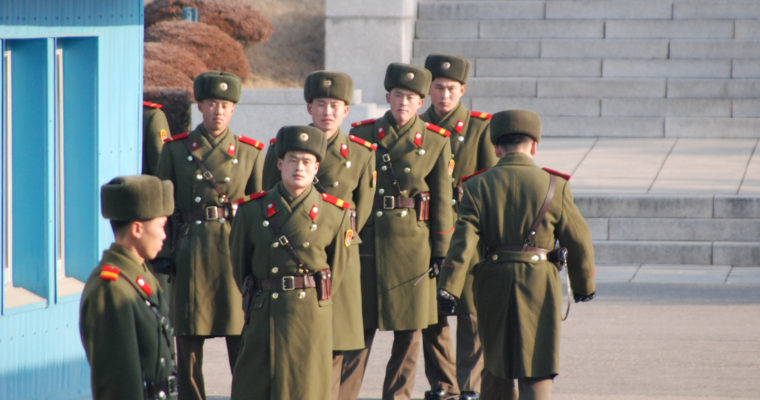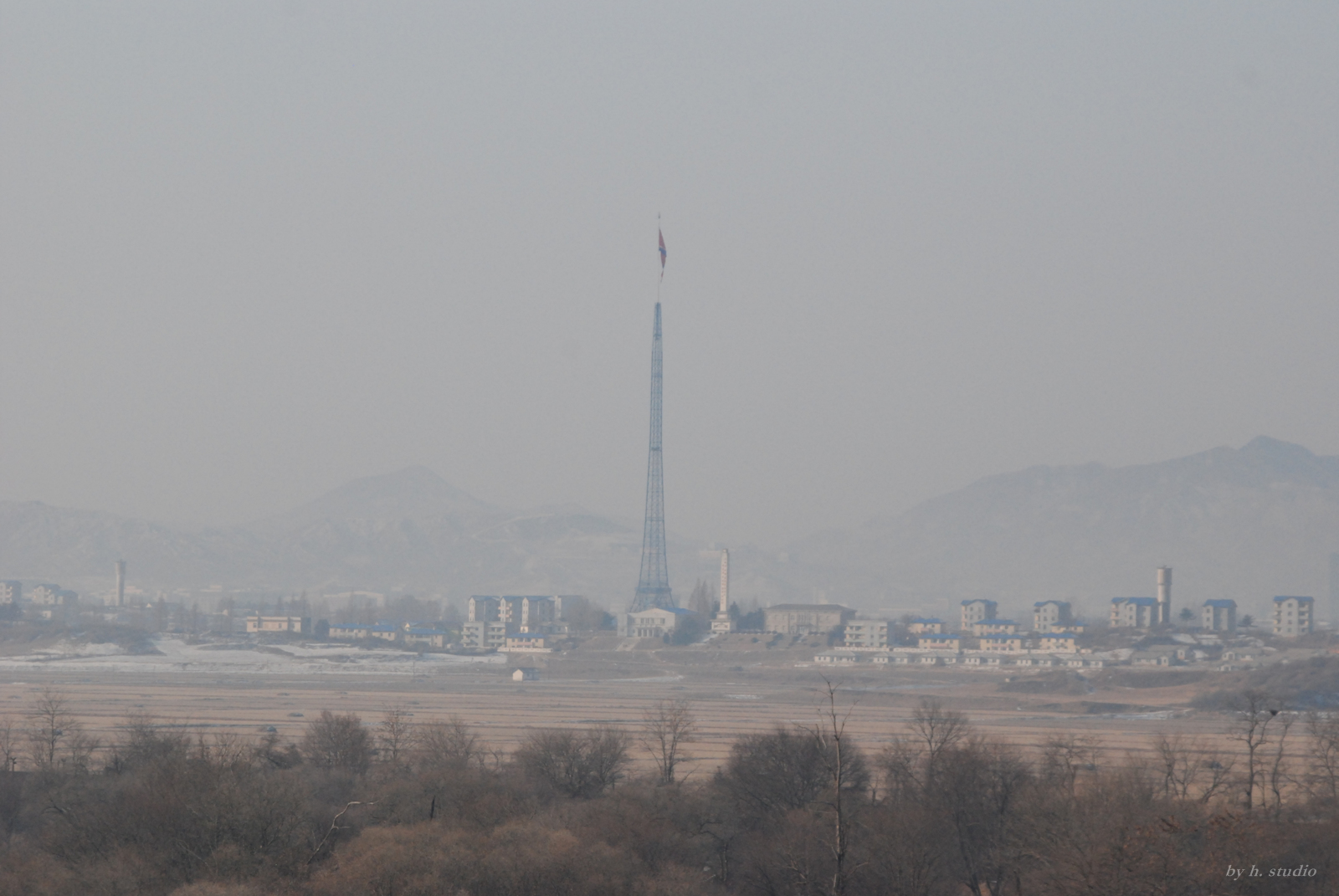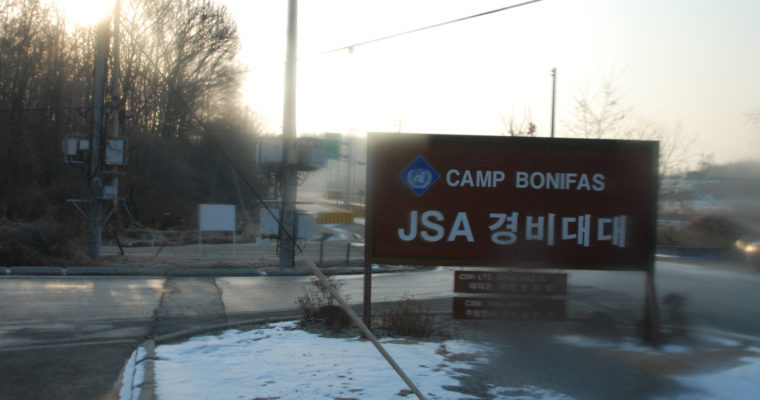Although in principle the soldiers in the DMZ did not bear arms (therefore they were all black belts in martial arts) there had been armed confrontations at the DMZ. There was the Axe Incident, where 2 UN commanders were killed when the UN side tried to trim down a poplar tree that was blocking the view from the UN.
Originally when the DMZ was set up, the soldiers from the two sides could roam freely within the zone. After the Axe Incident the UN instituted a strict border. Thus even in the conference room the polymers on the table denoted the actual border. Half the table in South Korea, the other half in North Korea.
Another incident happened where a Soviet defected to the “free world” and there was shooting. Some people died but the Soviet managed to accomplish his personal mission. After that, an executive order was issued to the effect that the North Korean soldiers would guard facing each other. The South Korean soldiers guarded the border facing the north. The North Korean soldiers guarded facing each other, for if anyone, including the guarding soldier, was to defect, the other will shoot. That means they guarded the border, as well as each other.
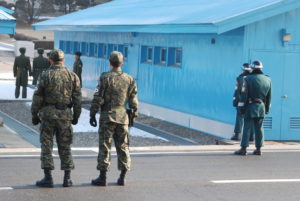
In many parts of the DMZ we could not take photographs. I imagined that was done to protect us, as photo-taking was considered spying and could subject the whole group to danger. As I toured the area, I certainly felt the sense that I was being watched, by unseen and unknown faces in the bushes. That was the classic tension of the Cold War in the 1980s, the fear that I remembered when I was younger.
After the Bollinger Hall the tour arrived at Checkpoint 3. There we saw North Korea from afar. In that vast expanse we could see the enormous North Korean flagpole and the statue next to it celebrating North Korean communism. The guide introduced the Propaganda Village, where North Korean propaganda was made and broadcasted to the country’s population. The village was now uninhabited and we could see the blue tops, the little houses that were the machinery of the state. Even at its mere appearance there was something haunting about that view of the North. A huge flagpole, a statue and a village that was deserted was the first impression of North Korea that I encountered.
The flagpole was 160 meters high hanging a flag of 30 meters in length. It would take 60 grown men just to hold the flag. The flag would be taken down during rainy days, for it would rip. The North Koreans built this flagpole in response to the South Koreans’ building of a huge one. I noted that it was within my own lifetime that national rivalry could be taken to this literal extent.
It was on a beautiful day that I visited the DMZ. Yet visibility seemed to have ended where North Korea began. My pictures of the Propaganda Village turned out hazy, as if even nature would stop the outside world from peering into the North, by descending a shawl of fog that shielded the one truly communist country remaining in East Asia. It stood afar in an unreachable mysteriousness, the only clarity was the classic Cold War tension that could still be felt.
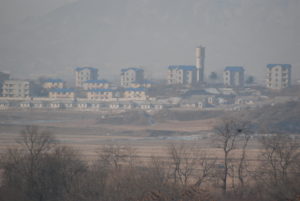
At Checkpoint 4 we saw the Bridge of No Return. The Bridge of No Return was where the Prisoners of War (POWs) were exchanged when the Korean War ended. Although this was not the famous original site where the soldiers were shown the option of either choosing the red North or the free world, its historical significance was amply conveyed. Once the choice was made, there would be no second chance. There was no longer any guard at Checkpoint 4 now, because in that zone the North Koreans could shoot.
I could not remember how many soldiers stationed at the border then, but the United States has cut down its military presence there, as such 96% of the guards at the border were South Koreans. I read on the newspaper a few days later that the South Koreans wanted to install remote controlled mines because they also wanted to cut down the military, in the belief that the advances in defense technology would provide adequate security against invasion by the North.
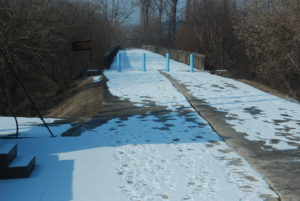
This is part of a series on the Demilitarized Zone at the 38th Parallel separating North and South Koreas. Please visit the other entries in this series below:
South Korea – The DMZ and the Bollinger Hall.
South Korea – The DMZ, Panmunjom and the Conference Room.
South Korea – The DMZ and the Infiltration Tunnels.


